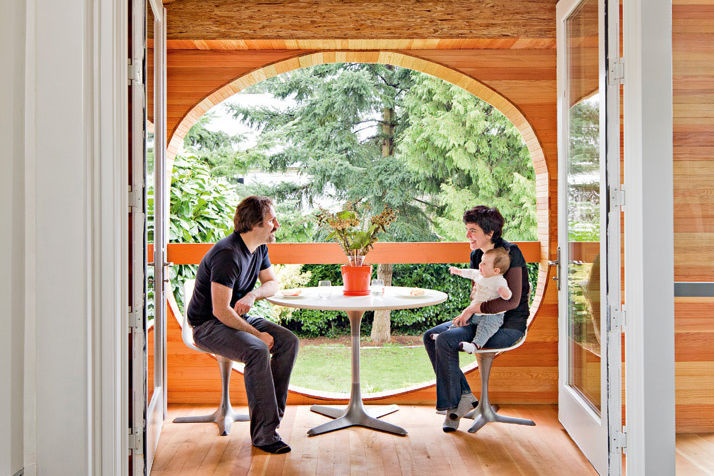
Family Circle
ON THE SLOPING SHOULDERS OF MOUNT TABOR, Edgar Papazian and Michelle Lenzi’s house catches the day’s last rays under the winking brows of its arched metal dormers. From the front, it’s a simple white box topped with a clever cocktail of corrugated steel and arcs. A stroll around back, however, reveals a more dramatic effect: circles and swoops have been carved into its framework, giving viewers what seems to be an intimate peek at the warm wood and round surfaces inside. “I have a fascination for the 1950s and ’60s, when people were really optimistic about the future and curves were seen as aerodynamic,” says Papazian, who designed the form himself. “You could call this Eero Saarinen on a very, very small budget.”
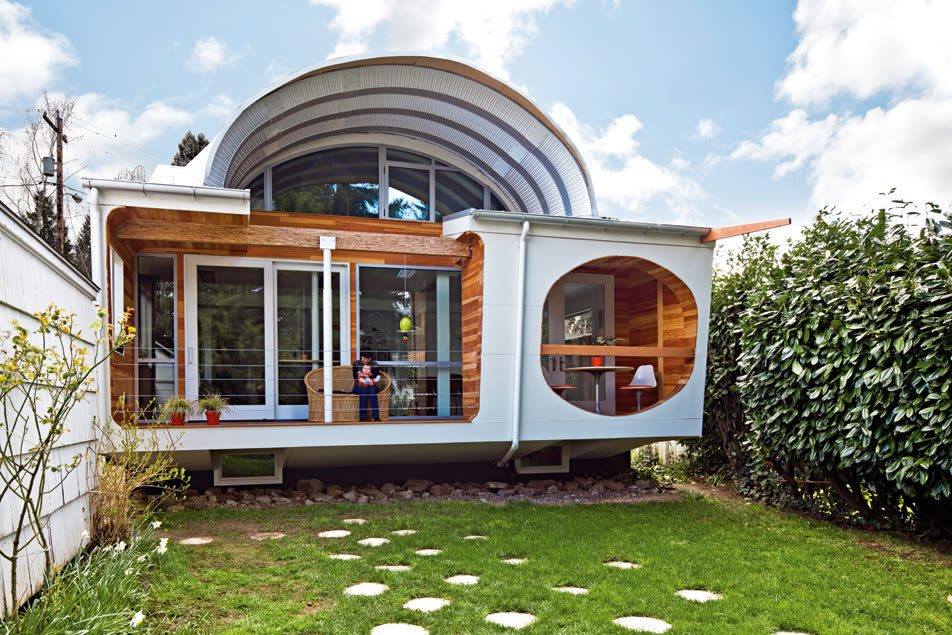
Image: Lincoln Barbour
The couple is originally from New York. Enticed by walkable neighborhoods, thoughtful urban planning, and a vibrant foodie community, they packed up their car for Portland in 2008. But perhaps even more compelling for Papazian, an architect with his own practice, Doon Architecture, was the dream of building his own home. “New York is built—it’s there already,” he says. “Here real estate is affordable, and we could actually have some fun with a project. It was about breaking the mold and trying something different.”
After house hunting for several months, they came across the perfect place for their design tinkering: a basic 1940s-style, 1,000-square-foot house with a sound foundation, well maintained but never renovated aside from some shag carpeting. “We weren’t erasing a past that the house had—it wanted to be redone,” says Lenzi, a genetics researcher. “It really didn’t have any character, it was just a blank slate.”
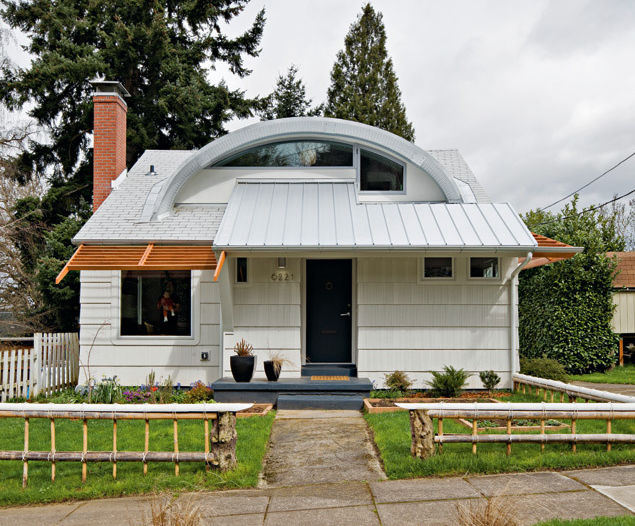
Image: Lincoln Barbour
Papazian immediately decided to flip the home’s axis from front to back (instead of side to side) to focus attention on the backyard, and extend the house upward instead of outward. Inspired by tunnels, caves, and other shapes with “a visual dynamic that lead up into space,” he decided to redraw traditional top-heavy dormers into something lighter and more modern. The night he first saw the house, Papazian went to a café and sketched the large sweeps of curved dormer overhangs that he envisioned enclosing the house on both the front and back. The remaining pieces slowly fell into place after a year of living in the space, figuring out what they liked (the small size, the wooded backyard) and what they didn’t (lack of views to outdoors, closed-off rooms, and ground-floor bedrooms). The first sledgehammer blow fell in June 2009, and after nearly a year of living in a 12-by-14-foot plastic-enclosed room in the basement, the couple was finished with the project—and Lenzi was eight months pregnant with daughter Giovanna.
The most defining features of the finished exterior are Papazian’s elegant arched overhangs. Six feet in span and made of the galvanized steel beams used in Quonset huts, the pieces were lifted into place by crane after the old roof was lopped off. In addition to giving the house a quirky face-lift, the arches also achieve Papazian’s desired reorientation of the house and open it up to the backyard—an effect heightened by a back wall of glass instead of solid sheetrock.
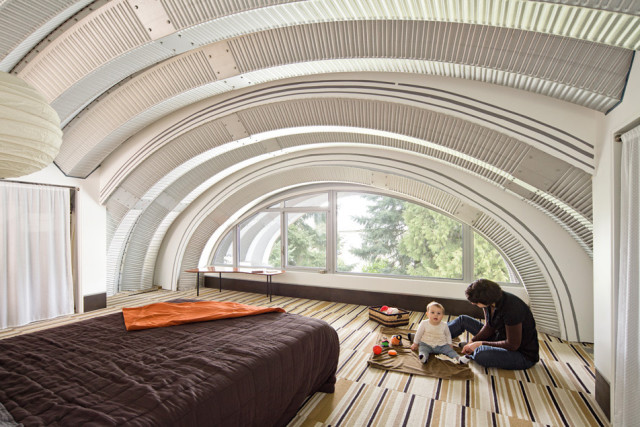
Light dips and pools in the metal arches of the master bedroom upstairs.
Image: Lincoln Barbour
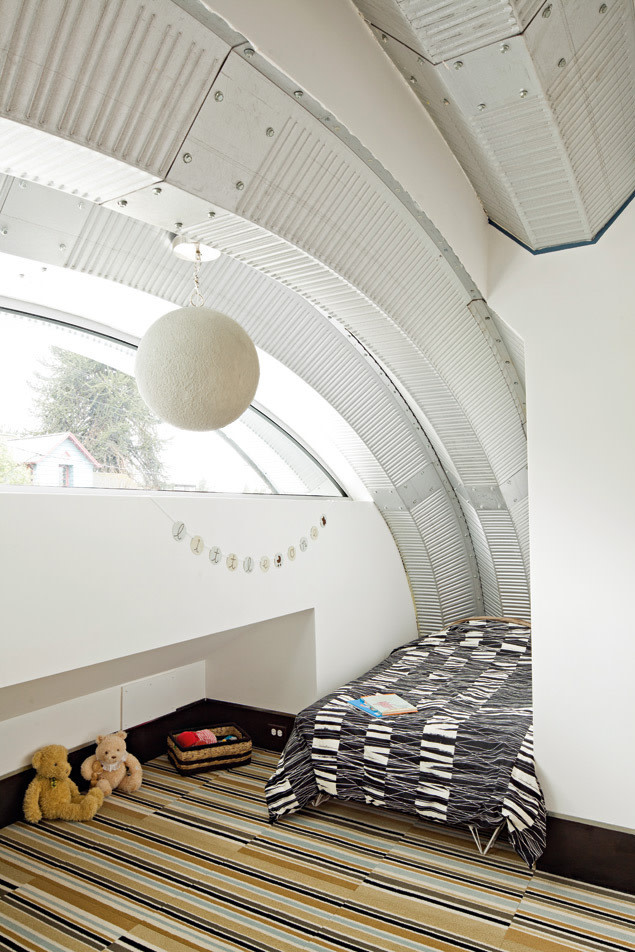
Image: Lincoln Barbour
The massive curves set the tone for inside, as well. Forget straight-lined modern; everything from chair backs to faucets to the bird feeder is softly rounded in this home. Walls slide and glide their way around the rooms, arching to meet the ceiling rather than colliding at right angles. “Curved shapes are comforting,” says Lenzi. “Everything’s sort of wrapping around you.” Downstairs, in what now comprises the kitchen, living, office, and dining areas, richly refinished wood floors and butcher block countertops, as well as the addition of a Doug fir back deck, complete the feeling of warm enclosure. For some contrast, punctuations of industrial ethos run throughout, from a perforated steel screen in the dining room to metal bolts and screws on ceiling beams and metal arches topping the two bedrooms and bathroom upstairs. White paint, lots of natural light from added windows, and few interior walls make the house live larger than its footprint.
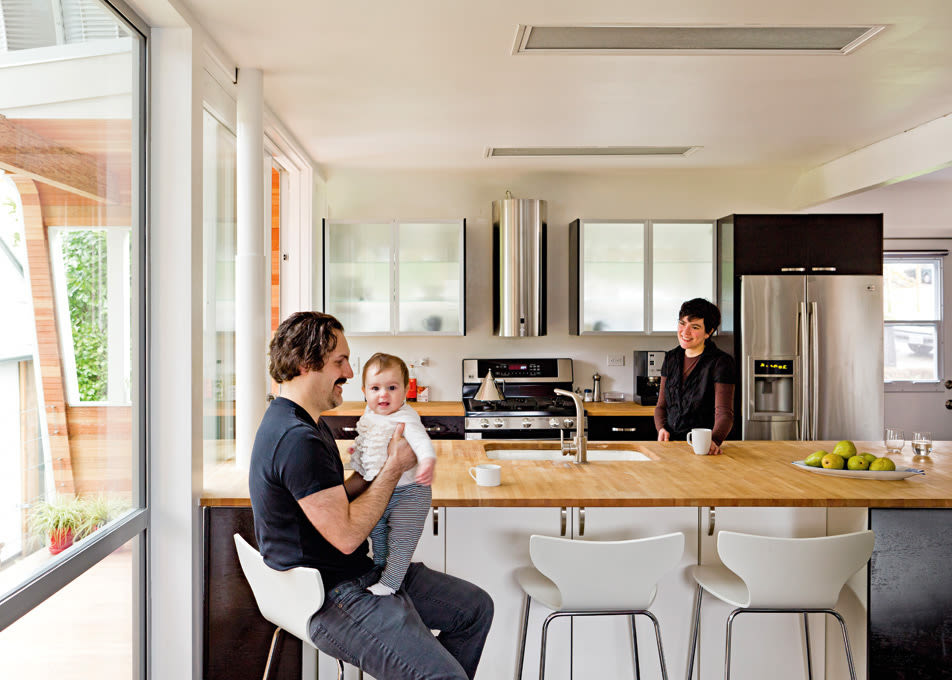
Since very little square footage was added in the renovation, clean lines, lots of natural light from added windows, and open spaces help expand the home’s interior.
Image: Lincoln Barbour
The changes all aren’t about aesthetics, however. Threads of shared memories are incorporated into the design: a bookcase core that contains their collection of tomes on jazz, cooking, and architecture; a kitchen where expansive countertops are used to roll out the same ravioli recipes that Lenzi’s grandmother makes; and artwork by Papazian’s mother, Janet Gasson, make the entire house is a true reflection of the family. The front door handle was designed by one of Papazian’s architecture professors, and an alcove in toddler Giovanna’s room is the same shape and size of a nook where Papazian used to sleep as a child.
“With all these small houses here in Portland, there’s the ability to really tailor-make a home in a way that’s very authentic and personality driven,” says Papazian. “And that’s what we tried to do here: make a new kind of architecture that’s both modern and improves people’s spirit and mental state.”



